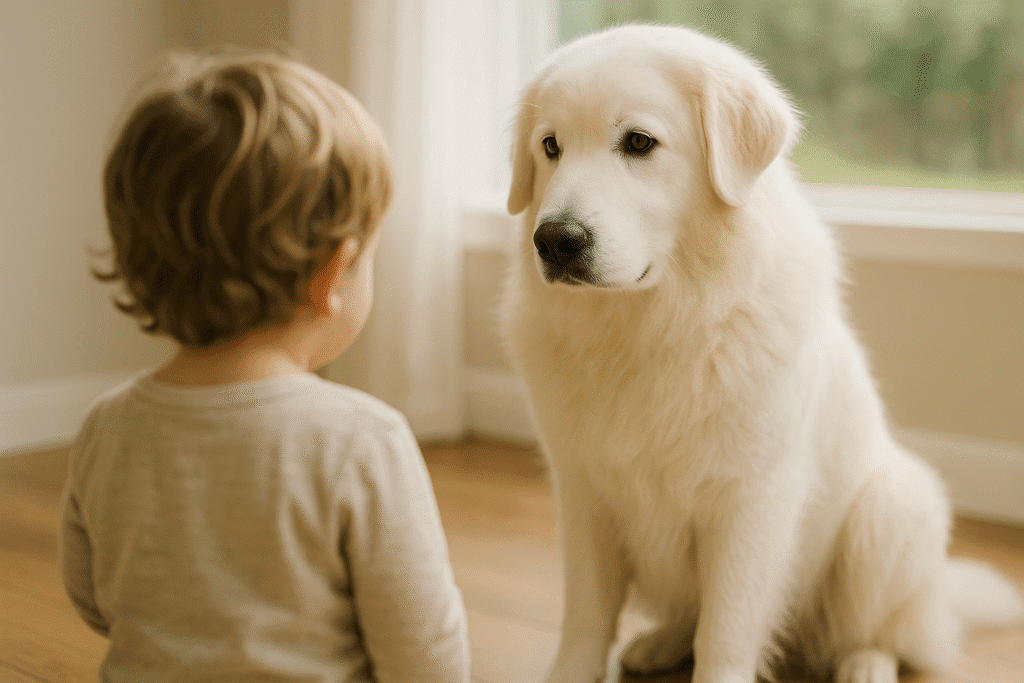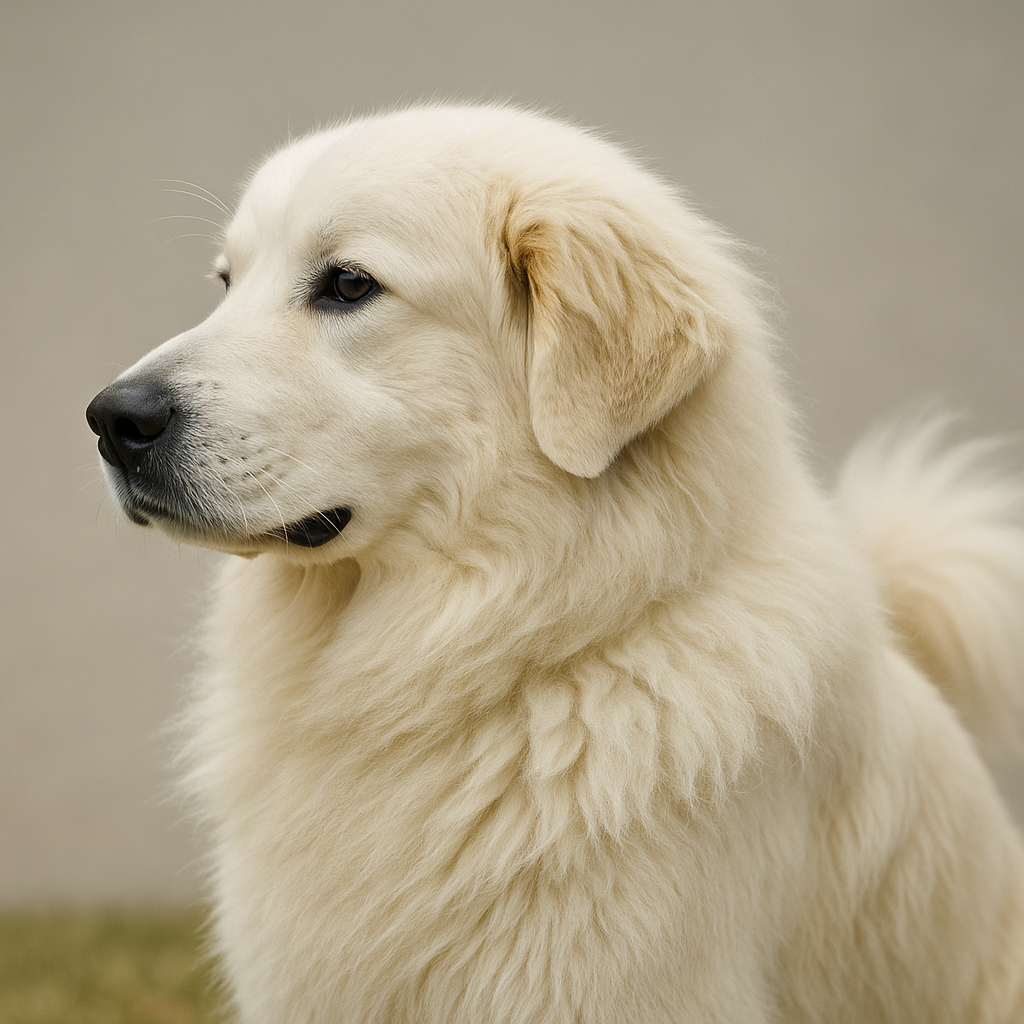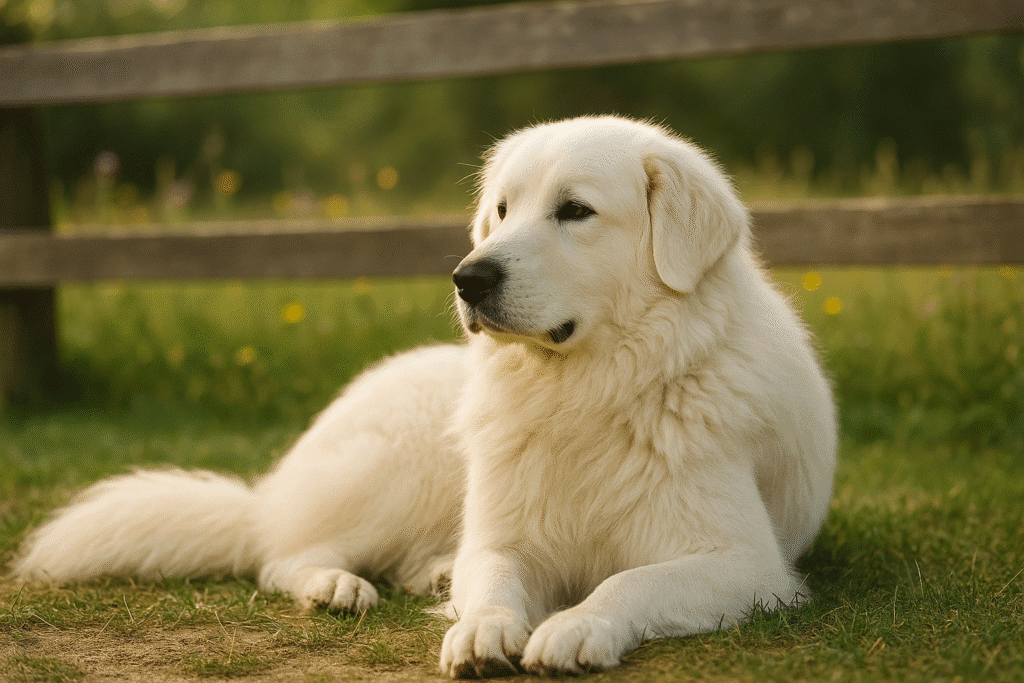The Great Pyrenees Care Guide covers everything you need to know about this gentle, loyal giant. From grooming and diet to training and health, discover how to care for one of the most majestic and loving dogs you’ll ever meet.
1. Introduction to the Great Pyrenees
The Great Pyrenees, also known as the Pyrenean Mountain Dog, is a breed that embodies calm strength and unwavering loyalty. Originally bred to guard livestock in the Pyrenees Mountains between France and Spain, this dog combines noble beauty with a protective instinct that remains unmatched. Whether lying gracefully in your living room or watching over a herd, the Great Pyrenees commands attention through quiet confidence and heartwarming devotion.
Before bringing one into your life, understanding their unique care needs, temperament, and health considerations will ensure your gentle giant thrives in your home and heart.

2. Personality and Temperament
The True Nature of a Gentle Giant
The Great Pyrenees is calm, patient, and fiercely loyal. Known for its serene nature, this breed is protective without being aggressive — an ideal guardian for both families and flocks. They are particularly gentle with children and smaller pets, often acting as watchful protectors.
However, this calm demeanor doesn’t mean they lack independence. As natural guardians, they make decisions on their own, so early socialization is vital. If not properly trained, they may become overly protective or stubborn. Still, with consistent care, the Great Pyrenees’ loyalty and grace make them one of the most loving breeds to live with.
3. Physical Traits and Appearance
The Great Pyrenees is unmistakable with its thick double coat, expressive dark eyes, and plumed tail that curves elegantly over the back. Males typically stand 27–32 inches tall and can weigh between 100–120 pounds, while females are slightly smaller. Their white or cream coat not only enhances their angelic presence but also protects them from cold weather and predators.
Because of their dense coat, they shed heavily during seasonal changes. Brushing several times a week helps manage shedding and keeps their fur clean and soft.

4. Grooming & Maintenance
Keeping That Majestic Coat Beautiful
The Great Pyrenees’ thick double coat requires regular grooming to prevent matting and dirt buildup. A good routine includes:
- Brushing: 2–3 times per week with a slicker brush and undercoat rake.
- Bathing: Every 6–8 weeks, using a mild dog shampoo to preserve natural oils.
- Ear Cleaning: Once a week to prevent infections, especially in humid climates.
- Nail Trimming: Monthly or as needed to prevent discomfort and mobility issues.
Regular grooming not only maintains their coat but also allows you to check for skin problems or lumps early. For an in-depth grooming guide, check out AKC’s official Great Pyrenees breed profile.
5. Training Tips for Great Pyrenees
Building Respect and Trust Through Consistency
Training a Great Pyrenees requires patience, consistency, and gentle leadership. This breed is intelligent but independent — meaning they’ll respond best to calm, positive reinforcement. Avoid harsh corrections; instead, use rewards like praise, treats, and playtime.
Early Socialization Is Key
Expose them to different people, pets, and environments early on. A well-socialized Pyrenees grows into a confident, well-behaved adult. Basic obedience commands like “sit,” “stay,” and “come” should start as early as 8 weeks old.
They also benefit from crate training, which provides a sense of safety. For reference, read our post on How to Crate Train a Rescue Dog.

6. Exercise and Energy Needs
Despite their large size, Great Pyrenees dogs are not overly energetic. They prefer moderate daily walks and light playtime in a secure yard. Around 30–45 minutes of activity per day keeps them mentally stimulated and physically fit.
Remember — these dogs are bred for endurance, not speed. Avoid over-exercising, especially in hot weather, as their thick coat can lead to overheating.
7. Diet and Nutrition
Feeding Your Gentle Guardian Right
A proper diet is vital to maintaining the Great Pyrenees’ strength and longevity. High-quality dog food rich in protein and omega-3 fatty acids supports muscle and coat health.
- Protein: 22–26% for adult dogs.
- Fat: Around 10–15%, depending on activity level.
- Calcium: Supports bone and joint health, especially for large breeds.
Since they’re prone to bloating (gastric dilatation-volvulus), feed smaller portions 2–3 times daily instead of one large meal. For expert insights, refer to Merck Veterinary Manual — Gastric Dilation and Volvulus (GDV) in Dogs
8. Common Health Issues
While generally healthy, Great Pyrenees can be prone to several genetic conditions:
- Hip Dysplasia: Common in large breeds; maintain healthy weight and provide joint supplements.
- Bloat (GDV): Can be life-threatening; avoid rapid eating or intense activity after meals.
- Luxating Patella: Occasional joint misalignment; requires vet attention if limping occurs.
- Heart Issues: Regular check-ups can detect murmurs or arrhythmias early.
Regular vet visits, balanced nutrition, and maintaining an active yet relaxed lifestyle all contribute to a long, healthy life.
9. Living With a Great Pyrenees
Life with a Great Pyrenees is peaceful and heartwarming. They’re affectionate without being clingy and protective without being overbearing. Because of their intelligence, they need mental stimulation — puzzle toys, gentle training sessions, and consistent companionship.
Although they love outdoor space, they also crave family presence. Leaving them alone for long periods can lead to anxiety or destructive behavior.

FAQ — People Also Ask About Great Pyrenees Care
1. Are Great Pyrenees good family dogs?
Absolutely. They’re gentle, patient, and protective, making them ideal companions for families with children and other pets.
2. Do Great Pyrenees bark a lot?
Yes — they’re natural guardians and may bark to alert owners of unfamiliar sounds. Early training helps control excessive barking.
3. How often should you groom a Great Pyrenees?
Brush 2–3 times weekly and bathe every 6–8 weeks to maintain coat health and reduce shedding.
4. How long do Great Pyrenees live?
Typically between 10–12 years, with proper diet, exercise, and veterinary care.
5. Are Great Pyrenees easy to train?
They’re intelligent but independent. Positive reinforcement and early consistency yield the best results.
CTA: Learn More About Dog Breeds
Want to explore more about large, loyal breeds like the Great Pyrenees? Read our full guides on Bernese Mountain Dog Care and Samoyed Dog Care to discover their personalities, grooming needs, and training secrets.

